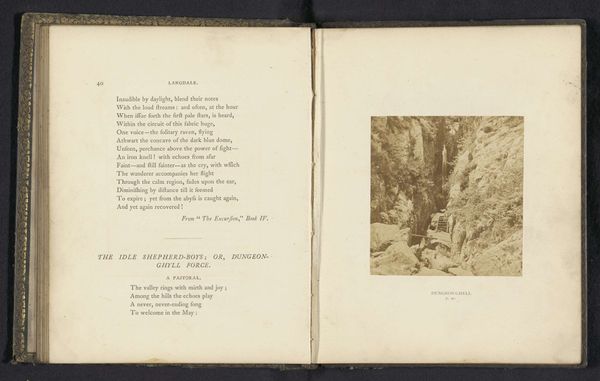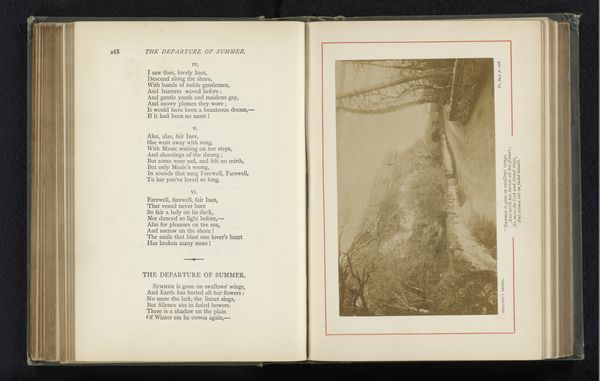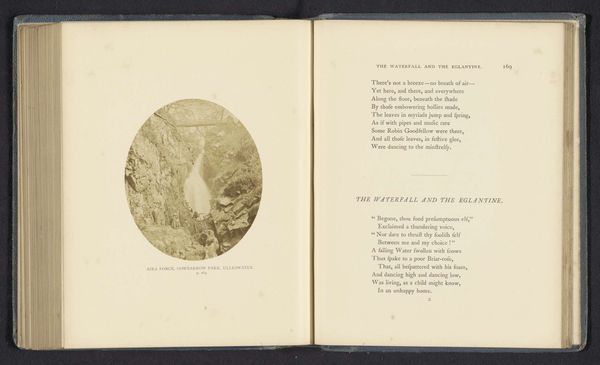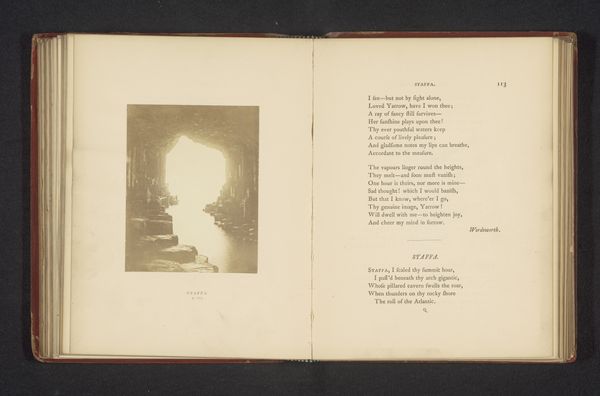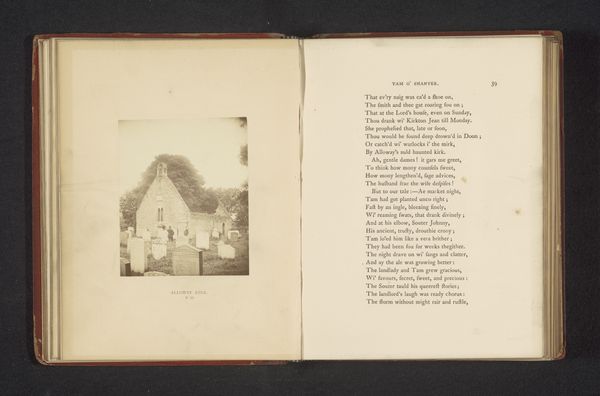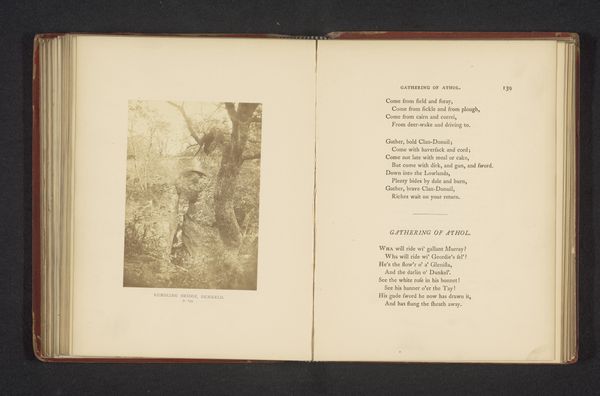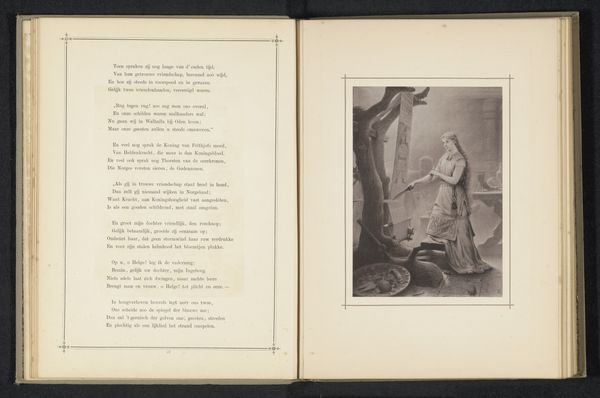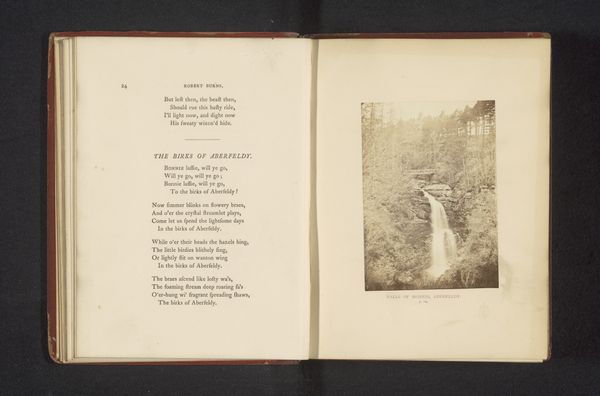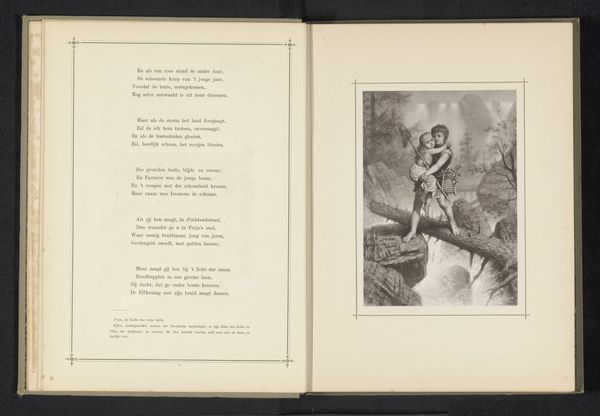
Dimensions: height 95 mm, width 81 mm
Copyright: Rijks Museum: Open Domain
Curator: Here we have an albumen print entitled "Stock-ghyll Force, near Ambleside," a work created by Thomas Ogle sometime before 1870. Editor: It has a sort of dreamlike, ethereal quality to it, with that soft focus and warm, sepia tone. The composition, contained within an oval, really focuses the eye. Curator: Absolutely. Ogle was working at a time when photography was increasingly exploring aesthetic possibilities. The subject matter aligns with the picturesque movement and the broader Romantic fascination with nature, but what makes this interesting is the placement of the photograph. Here, we see it printed in a book, facing a poem. It creates a unique dialogue between visual representation and the written word, reflecting broader cultural interests. Editor: I am struck by how it presents a tamed vision of nature. Even though a waterfall possesses inherent force and power, the albumen print renders it gentle, almost nostalgic. I wonder about the intended audience. Was this crafted to inspire awe or something more… domesticated? What sociopolitical messages are embedded here? Curator: Interesting point. We must remember that while depicting raw nature was central to Romanticism, the cultural interpretation could also enforce specific perceptions, shaped by Victorian social values. The emerging middle class desired artwork they could possess and which reconfirmed certain class perceptions. This kind of book made art and idealized visions accessible in a controllable, consumable format. Editor: Right, because that controlled, consumable format is very apparent to modern eyes when encountering these romanticized artworks, such as landscape images. The history and technology is critical to observe. I appreciate seeing works like these within broader societal and technological contexts. Curator: And ultimately, by contextualizing Thomas Ogle’s “Stock-ghyll Force” within this historical lens, we gain a richer understanding of how photographic technology was harnessed to visualize and perpetuate certain ideas about nature, art, and society. Editor: Absolutely, it gives us critical insight into a pivotal point where visual art began mediating between raw existence and public consciousness.
Comments
No comments
Be the first to comment and join the conversation on the ultimate creative platform.
